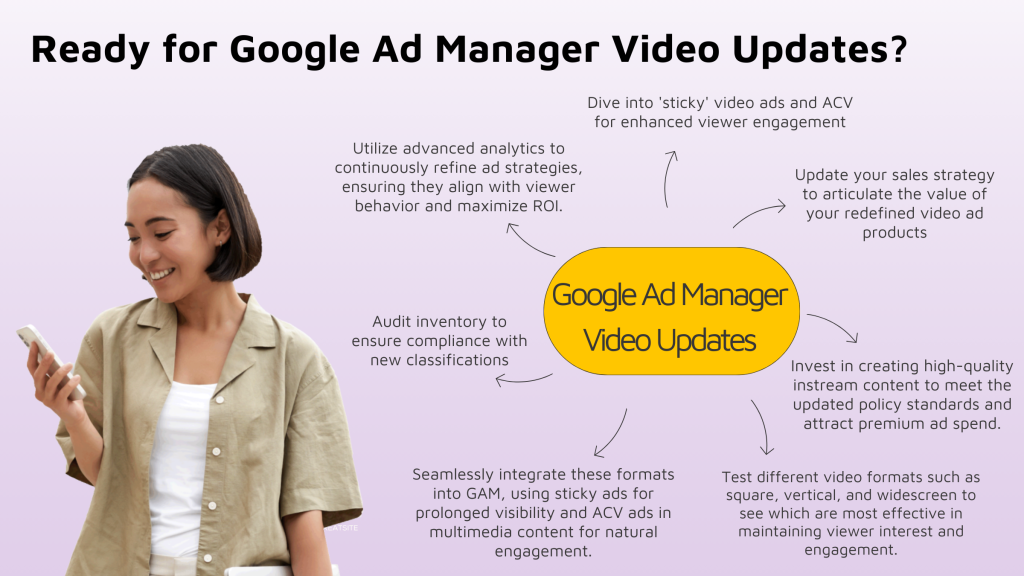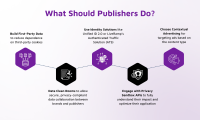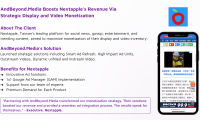Mastering the New Google Video Policy: Strategic Insights for Publishers

There is an increasing anxiety among publishers about the potential 30% to 50% revenue drop following the latest updates of IAB Policy implemented by Google. It’s imperative we understand these changes are not a setback, but an opportunity to enhance outdated ad tech strategies.
What’s the new Google Ad Manager Video policy?
The IAB Tech Lab’s updates, adopted by Google Ad Manager, aim to sharpen the distinction between instream and outstream video ads. Instream is now defined strictly as a “YouTube-like” user-initiated experience with sound. Outstream has been segmented into three categories—accompanying content, interstitial, and no content/standalone—each triggered by user visibility rather than autoplay, refining how these ads are presented and sold.
Why this matters
The IAB’s push for these changes was driven by the necessity for precision in ad inventory classification. This adjustment aligns publisher offerings with advertiser expectations, ensuring that terms like “premium” truly reflect ad value.
What this means for publishers and advertisers
For Publishers: Clearer definitions help prevent the dilution of premium inventory and maintain the integrity of advertising spaces.
For Advertisers: They benefit from precise ad placements, ensuring their investments are placed in content that genuinely engages the audience, thereby increasing the effectiveness of their ad spend.
Strategic roadmap for publishers
- Embrace new ad formats including Sticky and ACV video ads
- Explore & test new ad formats: Investigate the features and benefits of ‘sticky’ video ads and Accompanying Content Video Ads (ACV) introduced by Google. Sticky ads remain on the screen as users scroll, ensuring constant ad visibility and potentially higher engagement rates. ACV ads blend seamlessly with content, activating only when in view, which enhances user experience without being intrusive. These formats can significantly increase viewer retention and engagement.
- Integration strategies: Effectively integrate these new ad formats with Google Ad Manager by using sticky ads on long-scroll articles for prolonged exposure. Place ACV ads on multimedia pages where they can naturally initiate as users engage with content, complementing rather than disrupting the user experience.
- Revenue enhancement: Analyze past performance data to identify which types of content best suit sticky and ACV ads. Focus on user engagement metrics such as time on page and interaction rates. Segment the data by content type, and identify patterns where video ads have historically performed well. Use this insight to align new ad formats with content that is already engaging to users, thereby enhancing the potential for revenue growth.
- Optimize ad performance through diverse designs
- Test different video formats such as square, vertical, and widescreen to see which are most effective in maintaining viewer interest and engagement. Use A/B testing to compare performance across different content types and audience segments. Analyze metrics such as view-through rates, click-through rates, and ad recall to determine which formats resonate best with your audience.
- Audit inventory to ensure compliance with new classifications
With Google’s stringent enforcement on non-compliant accounts, it’s crucial for publishers to audit their current video ads. Ensuring alignment with the new policies is key to maintaining a steady ad revenue stream without interruptions. This involves:
- Verification of ad types: Check each ad product against the new instream and outstream definitions to ensure accurate labeling.
- Quality control: Evaluate the quality of content associated with each ad to ensure it meets the “premium” criteria where applicable.
- Technical specifications: Review technical aspects such as video player settings, autoplay features, and sound activation to comply with the updated standards.
- Update your sales strategy to articulate the value of your redefined video ad products
Update your sales strategy to effectively communicate the value of newly defined ad products. This can be achieved by:
- Training sales teams: Educate your sales team on the nuances of the new ad classifications and how they differ from previous offerings.
- Creating marketing collaterals: Develop clear and compelling sales materials that highlight the benefits and features of the redefined ad products.
- Targeting the right advertisers: Identify and approach advertisers whose campaign goals align with the features of the new ad formats, emphasizing context and viewer engagement.
- Enhance content quality by producing engaging instream content
Invest in creating high-quality instream content to meet the updated policy standards and attract premium ad spend. Actionable steps include:
- Content development: Focus on producing or acquiring video content that naturally engages viewers, such as high-definition, professionally produced videos that start with sound on.
- Viewer engagement strategies: Implement interactive elements or compelling storytelling techniques that encourage viewer interaction and prolonged engagement.
- Regular content updates: Keep the content fresh and relevant to maintain viewer interest and engagement over time.
- Deploy advanced ad technologies to optimize ad delivery and compliance
Utilizing cutting-edge ad technologies is critical for ensuring compliance with new standards and optimizing ad delivery. This includes:
- Ad serving solutions: Invest in sophisticated ad serving platforms that can handle complex rules around when and how ads are displayed according to the new guidelines.
- Real-time adjustment capabilities: Use technologies that allow for real-time adjustments in ad placement based on viewer behavior and engagement metrics.
- Compliance monitoring tools: Implement tools that continuously monitor compliance with video ad standards to preemptively identify and rectify any deviations.
- Maintain an agile response to feedback to adapt strategies for maximum impact
Continuously assess the impact of these changes and adjust your strategy to maximize results. This involves:
- Feedback loops: Establish mechanisms to gather and analyze feedback from both advertisers and viewers regarding the new ad formats and content.
- Adopt analytical tools: If you don’t have an ad tech partner, equip your team with advanced tools such as Google Analytics, Adobe Analytics, or specialized ad testing platforms to provide real-time feedback on ad performance across platforms and devices.
- Data-driven creative optimization: Use the insights from these tools to refine and optimize ad creatives continually. For instance, increase the use of interactive ads in articles where they perform well, or prioritize vertical videos for mobile-targeted campaigns based on higher completion rates.
For those in the publishing industry looking to navigate these changes effectively, our team at AndBeyond.Media offers personalized advice and robust support to ensure you not only adapt but thrive in this new environment. If you’re a publisher seeking to understand how you can effectively work around these updates, we are available to provide advice and help you navigate this change.



Leave a Reply